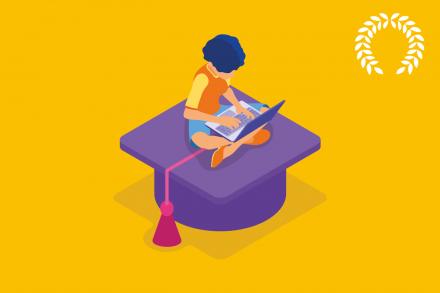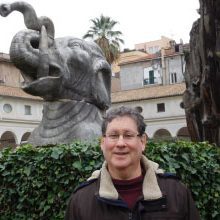Open Education: The Many Ways to Target World Disparities

It’s universally recognized that education is the basis for solving problems everywhere: poverty, the status of women, adaptation to environmental disruption, and more. Anything that can spread high-quality education—and nowadays, we must specifically call for accurate education—is therefore contributing to saving our world. This article updates an article on education originally published in July 2021 as part of LPIS’ Open Anniversary.
Education has many aspects, including teaching itself, stand-alone materials such as books and videos, and access to the internet or other media. We’ll cover a variety of contributions to expanding education in this article.
Open Educational Resources
The most widespread and well-known phenomenon in open education is free course materials. The official term, Open Educational Resources (OER), was launched as an international movement by UNESCO in a 2012 declaration. The declaration was covered in an article by Creative Commons, which has a site devoted to OER. The Hewlett Foundation is another long-time backer of OER.
OER commonly offers a bundle of resources in many media to support the teaching of a single course. The materials may include documents, videos, suggested readings, and curricula. One of the oldest and largest such archives is OpenCourseWare at the Massachusetts Institute of Technology (MIT). The university started accumulating syllabuses, lecture notes, videos, and other materials from its professors in 2002, and now claims to serve millions of visitors every year. Their website and YouTube channel have racked up more than 300 million visits during their two decades.
One of the reasons OpenCourseWare makes a good case study, besides its size and longevity, is that MIT released a major study of its impact in 2005, followed by smaller annual reports since then.
One intriguing finding in the study is that many visitors redistribute the materials, in print or electronic form, to students who lack internet connections (page 8). We will see other projects in this article that tap educational materials online and bring them to people who can’t get online themselves. This phenomenon illustrates how the internet intersects with other distribution media in the modern world.
What’s truly significant about OER sites such as OpenCourseWare is the dynamic adaptation of materials made by professors and others. Anyone is free to modify and redistribute the materials, as with free software. The 2005 MIT study found that “62% combine OCW materials with other content; 38% adapt course syllabi; 26% adapt assignments or exams” (page 3). This means, for instance, that instructors and even students can add material of local interest. And they can do translations: in fact, MIT is cooperating with several institutions to do translations into several languages (page 7).
MIT OpenCourseWare works through the OER’s Open 2030 Working Group to increase the diversity and spread of its visitors, and started a collaboration with a network of US-based historically black colleges and universities (HBCUs) in 2023.
Despite the radically open approach to modifications, I’ve found that most OER sites prohibit noncommercial use. The free software movement generally wants commercial use to be allowed. One OER site that does permit commercial use is OpenStax, from Rice University.
MIT, as a science institution (with departments in economics, marketing, and some other topics as well) has an advantage in designing open source materials because their courses cover topics that have no geographic limitations. Other institutions, which may offer courses on history or policy-making in a single country, would find their courses to be of less interest on a world market.
LinuxTips is a training program in Brazil that focuses on populations who are under-represented in computing by race or gender. According to Cesar Brod, LPI’s Community Engagement Director for Spanish and Portuguese Regions, 75 percent of LinuxTips students receive full scholarships. All of their learning materials are released cost-free. EDUCATRANSFORMA is another Brazilian project, friendly to transgender people, set up in 2019 to offer bootcamps about Linux.
Many other institutions offer OER, including a large collection are Reynold Community College and some edX courses.
Educational Platforms
We turn next to open computer systems designed for educational use. These systems are based on GNU/Linux, both because the licensing allows widespread, free distribution and because the systems themselves are open. Teachers and students can fix bugs, make enhancements, and learn valuable software skills along the way.
Some of these distributions are more finely tuned for educational use than others. In general, they contain games, educational resources, useful tools for content creation, and sometimes tools for organizing and conducting classes. Many distributions are useful in homes as well as schools, and often other institutions.
A notable example of these efforts is So.Di.Linux, a free-of-charge distribution of digital educational resources that can be used as a live USB/DVD or installed directly on a computer. The name comes from “software didattico libero” (free educational software in Italian) and denotes an initiative designed for Italian schools. The project was initiated by the Institute for Educational Technology of the Italian National Research Council (CNR-ITD) and was initially funded in 2003 as a research project by AICA (Italian Association for Automated Calculation).
So.Di.Linux offers a comprehensive range of educational apps and resources (both online and offline) supported by informative documentation from CNR-ITD’s educational resources database, Essediquadro. In addition, it provides several FLOSS assistive technologies (e.g., screen reader, magnifiers, on-screen keyboard) together with guides and tutorials about how to use them.So.Di.Linux users can navigate learning resources by following specific themes (for instance, “Developing computational thinking”, “Producing interactive lessons”, or “Teaching how to use the web”), a feature that helps new users to find the resources they need more easily.
Starting in 2007, a concerted effort wasn made to render So.Di.Linux more inclusive by adopting Universal Design principles. Italian teachers and students could customize the environment to make it more suitable to their specific needs. Development on So.Di.Linux appears to have stopped in February 2021.
Some other distributions include:
- EducatuX from Brazil. It is used in many public K-12 classrooms, being currently the only software package that contains all the materials required by the Ministry of Education for those classes. Their latest update was in July 2019.
- Endless OS. It includes a large collection of Wikipedia entries and educational materials, and is distributed to areas lacking internet access.
- Nova Linux from Cuba. This also is commonly used in schools.
- Escuelas Linux from Mexico, based on the Bodhi Linux distribution. It is designed to be easy to use out of the box and contains a lot of educational apps.
- Huayra from Argentina. Its contents are fairly general, but it is promoted by the government of Argentina for use in all secondary education. According to Juan Ibarra, LPI’s Partner Success Manager for Spanish and Portuguese Regions, the government has delivered more than 5 million netbooks with Huayra to students. The distribution was released in 2015 and has been reviewed in an English-language article.
- Guadalinex from Spain. It was used in education, along with other settings, but no longer appears to be an active project.
Learning Materials from Linux Professional Institute
The publisher of this article, Linux Professional Institute, has been developing an educational resource with important ramifications in free software: LPI Learning Materials. These cover a wide range of free and open source information required to pass LPI certification exams. Their organization matches the organization of the exams, topic by topic. Therefore, they are particularly apt for training programs.
Because Learning Materials are closely mapped to certification exams and LPI is concerned about maintaining quality for both the original English texts and the numerous translations, the license (CC BY-NC-ND 4.0) does not allow derivative products (changes to the original). They appear in this article because of their free availability for private use and their role in opening up knowledge about free software in general.
Furthermore, Learning Materials are notable for being a communal effort, developed by experts around the world. (I have done some reviewing myself.) One contributor, Alejando Egea Abellan, said, “Together we create a cool, passionate and diverse community whose main goal is the creation of updated quality materials that can be used by [LPI] candidates living anywhere on the planet.”
Ever since the first Learning Materials appeared in 2019, they have made inroads into professional training sites as well as university programs. For instance, Franz Knipp teaches bachelor-level courses in the computer science program at the University of Applied Sciences, Burgenland, Austria. He makes heavy use of the LPI Learning Materials for Linux Essentials, and offers the certification exam at the end of the course. This year, there were about 80 exam-takers, including almost all of the first-semester students in two study programs.
Peer-to-Peer Education
Another kind of openness consists of people coming together to learn without a teacher. This has been happening throughout human history, and among animals before it, so here we’ll just look at a popular, highly organized process called Learning Circles, coordinated by a group known as Peer-to-Peer University (P2PU).
Learning Circles have traditionally been held in person. Libraries are typical meeting places.
Each class has a facilitator, who does not have to know the subject and who helps to keep the class moving along productively on-topic. At a library, the librarian may take on this role. The role of the facilitator is group dynamics, not teaching. The students mostly teach each other, but may invite a subject-matter expert occasionally. In addition to helping each other learn, students provide peer support for sticking to a plan. Their shared goal of learning a particular topic provides both structure and motivation.
Learning Circles are a powerful form of empowerment in isolated places without access to teachers in a particular subject. The curricula and materials are often designed by schools and offered free to participants in the program.
P2PU, based in Boston, Massachusetts, USA, runs courses using open source tools such as Moodle, a learning management system. Their most recent web posting was in March 2023.
Conclusion
This article has covered only a few aspects of expanding education in our time. Hopefully, I’ve suggested the creativity that dedicated educators and technologists have shown. The very existence of digital resources and networks promotes learning. Although some studies question the quality of online education, it has been found successful in many places and has certainly kept education going during the COVID-19 lockdowns, even if in diminished form.
Ultimately, open education is about equal access regardless of demographics, geography, and economic status. It is an important counterforce to the tendency of education nowadays to flow to those who already have more resources and privilege. I think the trends in this article are helpful in bridging the gap.
